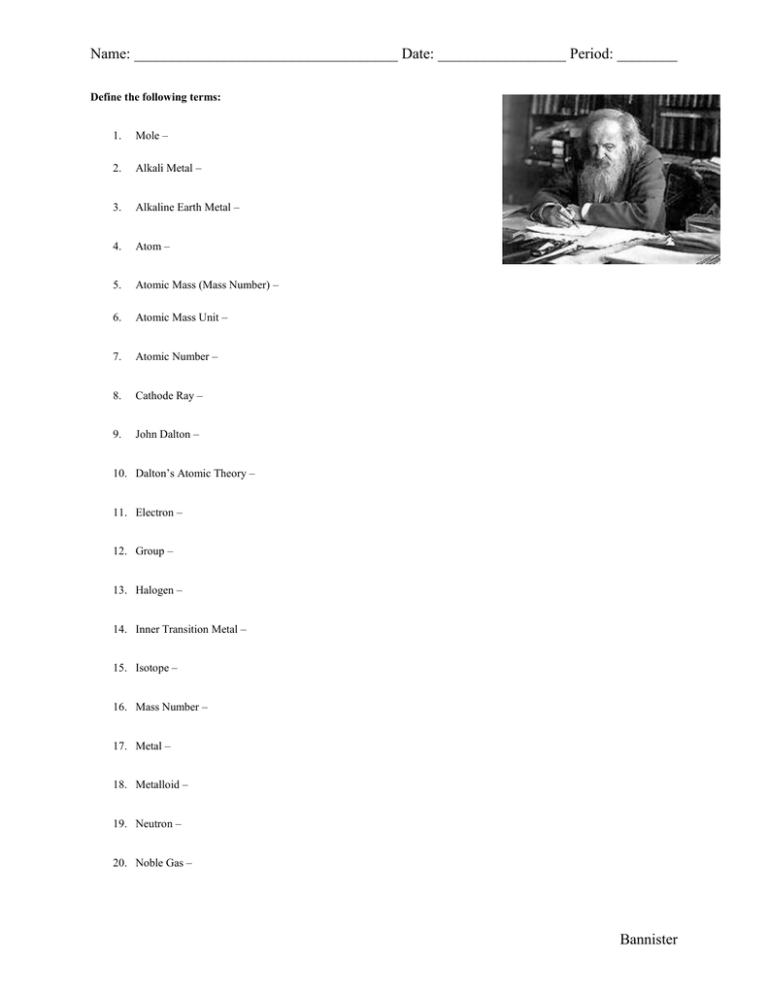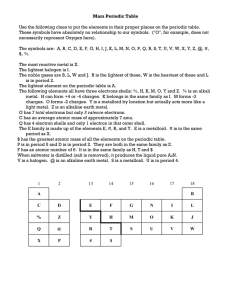Name: ___________________________________ Date: _________________ Period: ________
advertisement

Name: ___________________________________ Date: _________________ Period: ________ Define the following terms: 1. Mole – 2. Alkali Metal – 3. Alkaline Earth Metal – 4. Atom – 5. Atomic Mass (Mass Number) – 6. Atomic Mass Unit – 7. Atomic Number – 8. Cathode Ray – 9. John Dalton – 10. Dalton’s Atomic Theory – 11. Electron – 12. Group – 13. Halogen – 14. Inner Transition Metal – 15. Isotope – 16. Mass Number – 17. Metal – 18. Metalloid – 19. Neutron – 20. Noble Gas – Bannister Name: ___________________________________ Date: _________________ Period: ________ 21. Nonmetal – 22. Nucleus – 23. Period – 24. Periodic Law – 25. Periodic Table – 26. Who designed the Periodic Table? How did he do this / what criteria did he use to organize the elements? 27. Name two elements that should have similar properties to that of chlorine. a. _________________________________ b. _________________________________ 28. Proton – 29. Representative Element – 30. Transition Metal – 31. What are the seven diatomic elements? What does it mean to be DIATOMIC? 32. How is the atomic mass of an element calculated? Why is this not a simple, whole number? 33. Complete the following equations: Atomic Number = Number of ________________ = Number of ________________ Number of Neutrons = Mass Number – _____________________________ 34. How many protons are in the following atoms: a. b. c. Iron ____________ Zinc ___________ Lead ___________ d. Mercury __________ e. Oxygen ___________ f. Antimony __________ g. Rubidium _____________ h. Hydrogen _____________ i. Francium _____________ Bannister






